Key takeaways:
- Misinformation significantly distorts reality, often leading to misunderstanding and fear, emphasizing the need for media literacy.
- Identifying credible sources and verifying information through cross-referencing and fact-checking tools are essential strategies for combating misinformation.
- Engaging in open discussions and sharing personal experiences can effectively foster dialogue and understanding around misinformation.
- Utilizing tools like browser extensions and fact-checking websites empowers individuals to navigate and analyze news more critically.

Understanding misinformation in news
Misinformation in news can often distort reality, leading to misunderstanding and fear. I still remember a time when I encountered a sensational headline about a local event that turned out to be exaggerated. It made me wonder, how many people simply accepted those statements without seeking the truth behind them? This is the power and danger of misleading information in our media landscape.
At times, I feel frustrated when I see how easily misinformation spreads, especially on social media platforms. One striking example occurred during an election cycle when false claims about candidates began circulating widely. I can’t help but think, what if more people took a moment to verify before sharing? It’s a reminder that our responsibility as consumers of news extends beyond just reading—we need to question and critically engage with what we encounter.
In my experience, the emotional impact of misinformation can be profound. I’ve had friends express anxiety over unfounded reports about health issues that were based on flawed studies or unverified sources. It leaves me pondering—how do we bridge the gap between sensationalism and truth? This exploration of misinformation helps highlight the importance of media literacy in today’s fast-paced information age.
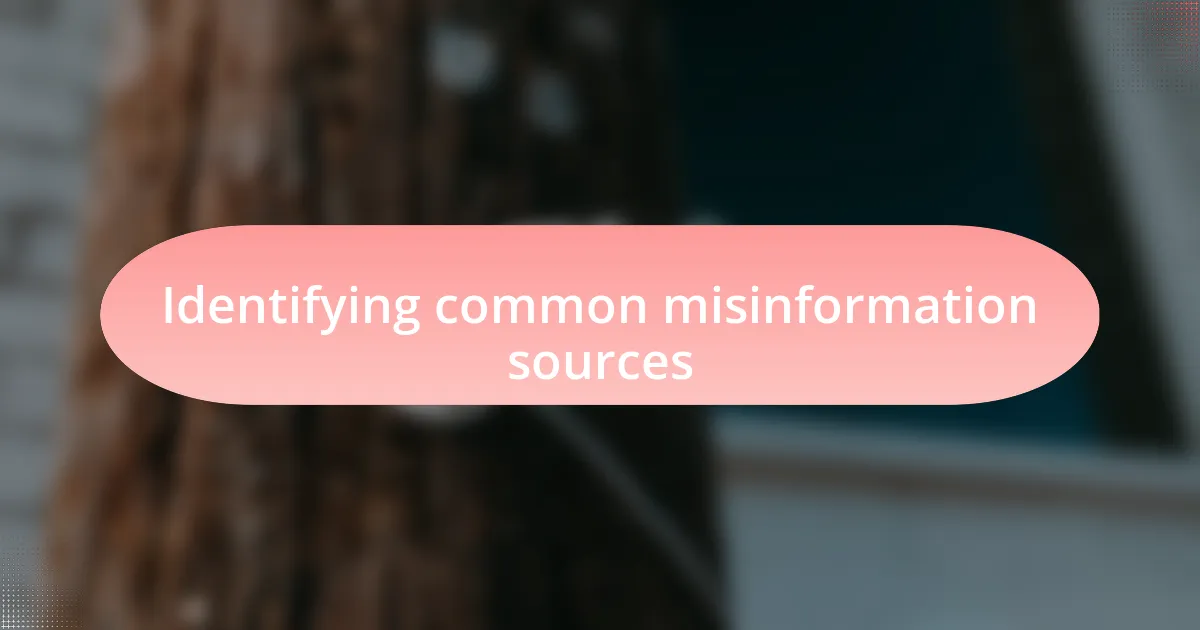
Identifying common misinformation sources
Identifying the sources of misinformation requires a keen eye, especially in South African news where diverse voices contribute to the narrative. I remember stumbling upon a seemingly credible post from an unfamiliar website claiming shocking statistics about crime rates. It made me wonder, how often do we blindly trust sources that lack reputation? Recognizing the domains we frequently visit can help us validate the authenticity of what’s being shared.
Social media is a notorious breeding ground for misinformation, often spreading rumors faster than the truth can catch up. I clearly recall a viral post during a recent health crisis that concocted dubious home remedies. This experience made me question, isn’t it our duty to pause and verify before clicking ‘share’? It’s essential to investigate the roots of such claims and consider the implications of spreading half-truths.
Moreover, official government and educational institutions usually provide reliable information but even they can occasionally be misinterpreted or misrepresented. I once saw an alarming infographic that misread a government report, causing panic in my community. This instance highlighted how critical it is to contextualize information and seek further clarification, as a little research can prevent widespread fear. How many times have we been misled by nice-looking graphics without understanding the actual data? It becomes evident that enhancing our media literacy is vital in navigating today’s information landscape.
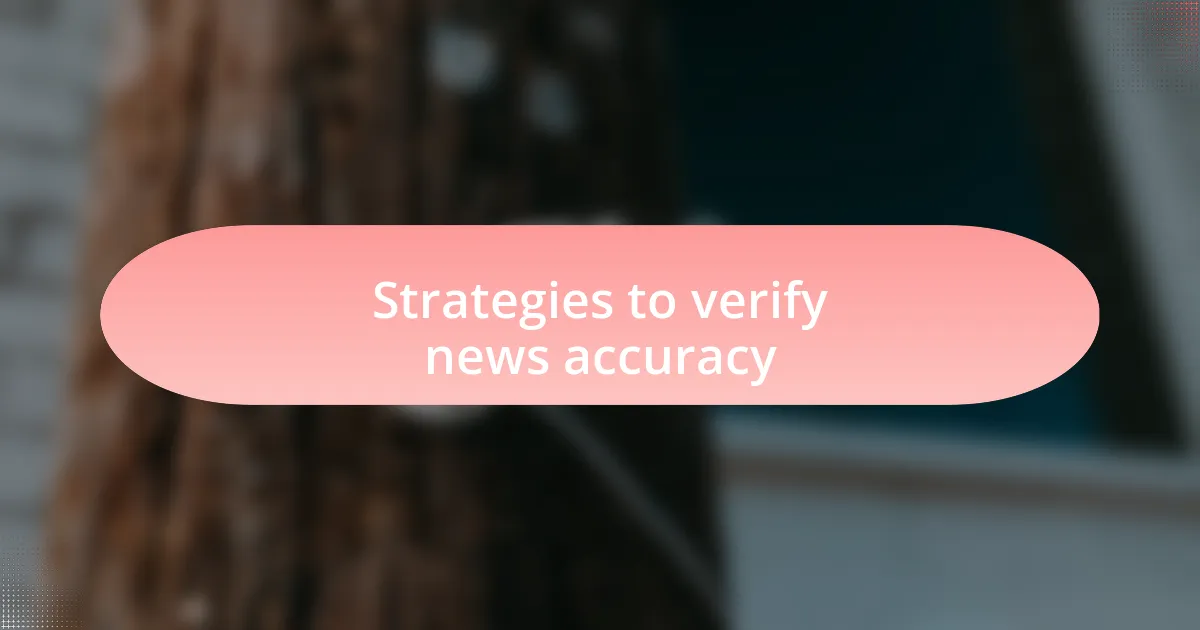
Strategies to verify news accuracy
When it comes to verifying news accuracy, cross-referencing multiple credible sources is crucial. I often find that a quick online search can unearth reliable articles that either corroborate or debunk claims circulating on social media. For instance, there was a time when I stumbled upon a shocking headline about an economic crisis that was later dismissed when I checked against reputable news outlets—how often do we rush to judgment without seeking a second opinion?
Engaging with fact-checking websites has become a powerful strategy in my toolkit. I remember feeling overwhelmed by various claims surrounding a local election, but a few minutes spent on sites like Africa Check dispelled most of my doubts. It made me realize that taking the time to confirm facts can empower not only myself but also those in my circle—after all, aren’t we all responsible for the information we choose to share with others?
Lastly, reaching out to experts or community leaders can provide invaluable insights. I once contacted a local historian regarding a viral article mischaracterizing our town’s heritage. Their perspective not only clarified the inaccuracies but also deepened my appreciation for the complexities of our history. Isn’t it fascinating how a simple conversation can yield a wealth of knowledge and foster a more informed community?
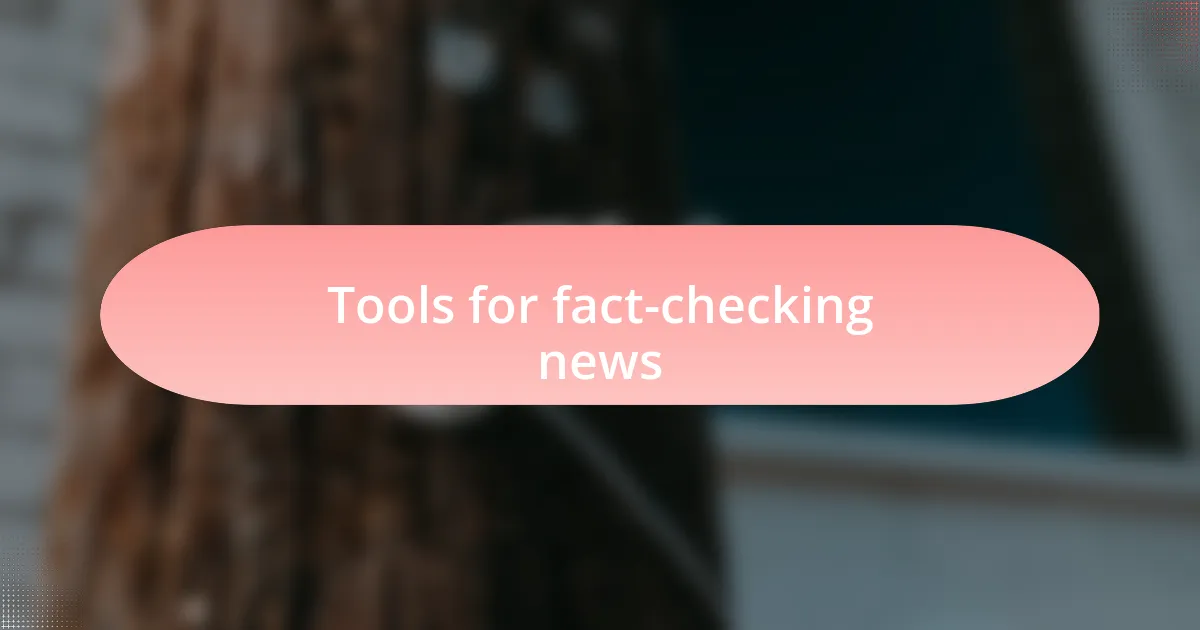
Tools for fact-checking news
When it comes to tools for fact-checking news, I’ve found that browser extensions like NewsGuard and Media Bias/Fact Check can significantly enhance my online experience. Each time I come across an unfamiliar source, I appreciate how these tools provide a quick rating—suddenly, I’m not just reading; I’m analyzing. Have you ever wondered how much misinformation circulates without a second glance? These extensions help me pause and reconsider.
Another resource I’ve come to value is the Google Fact Check Tool. There was a moment when a friend shared an alarming statistic about crime rates that sounded dubious. Instead of getting swept up in a wave of anxiety, I used this tool and quickly discovered the truth behind the claim. It was liberating to see that the sensational figure had been debunked before circulating, reminding me that critical thinking can be our best defense against fear tactics.
Social media platforms have also begun incorporating fact-checking labels. I vividly recall scrolling through my feed and spotting a heated debate over an unfairly circulated post about COVID-19. The label caught my eye, prompting me to explore further. Isn’t it refreshing to know that these platforms are taking steps to curb misinformation? It makes navigating the digital landscape a little less daunting and inspires me to advocate for a more informed society.
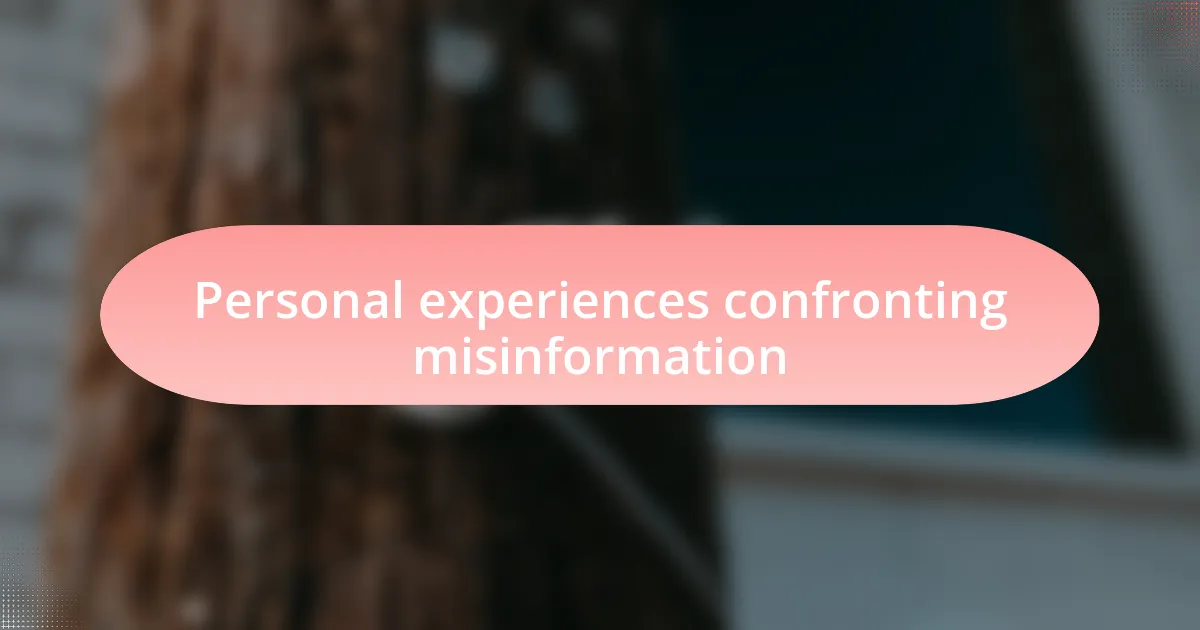
Personal experiences confronting misinformation
There was a time when a viral video circulated on social media, claiming to expose corruption within a local government. I remember feeling a mix of shock and outrage, but something nagged at me. I took a step back, applied what I’d learned about misinformation, and began digging into the original story. My research unveiled that the video had been manipulated to distort the truth, which made me realize how easily emotions can cloud judgment.
Another experience that stood out was a conversation with a family member who shared a conspiracy theory they encountered online. Initially, I felt frustrated but quickly chose to respond with empathy rather than anger. By calmly discussing the evidence and encouraging an open exchange of ideas, I could see a spark of curiosity in their eyes. It reminded me how important it is to foster dialogue rather than just dismissing differing viewpoints.
One evening, during a community meeting, a fellow member presented statistics that seemed off. I instinctively felt that something wasn’t right, so I decided to fact-check them on the spot. When I discovered the numbers didn’t align with credible data sources, speaking up felt empowering. Isn’t it fascinating how confronting misinformation not only sheds light on the truth but also encourages an open and informed community discourse?
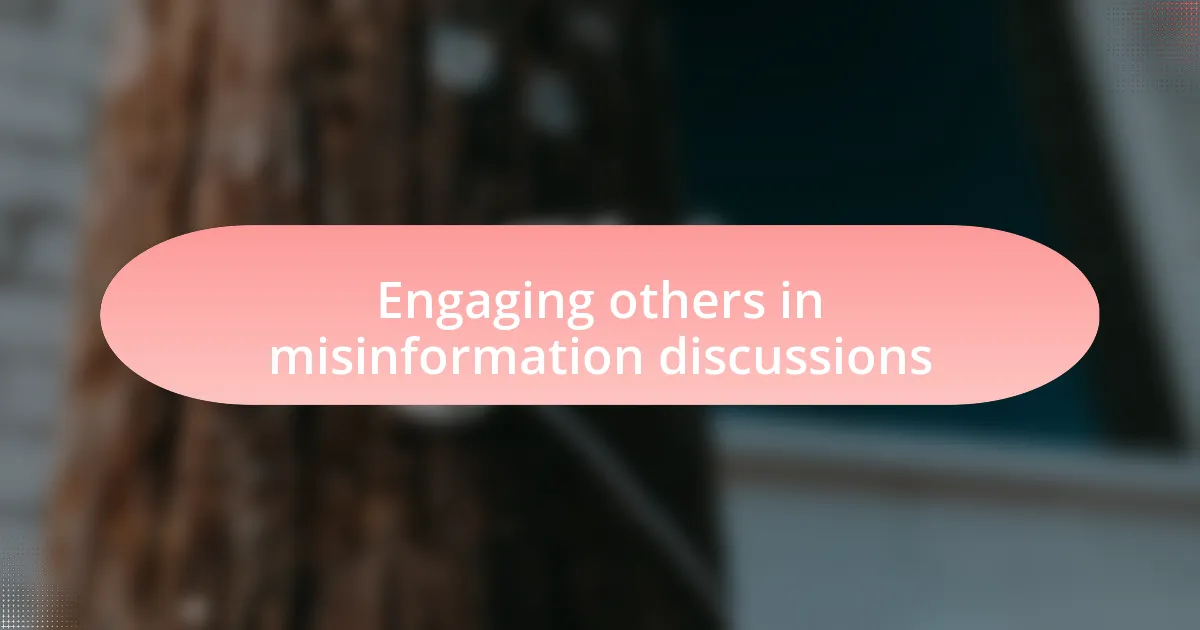
Engaging others in misinformation discussions
Engaging others in discussions about misinformation often begins with creating a safe space for dialogue. I recall a time at a coffee shop where a group of friends was debating a trending topic, and I sensed anxiety beneath their banter. Rather than jumping in with my own opinion, I chose to ask open-ended questions, like “What do you think makes this information credible?” This approach shifted the focus from confrontation to curiosity, and it opened the door for a more meaningful exchange.
I also believe that sharing personal stories can bridge gaps in understanding. Once, I spoke with a colleague who firmly believed a misleading statistic regarding health practices. Instead of outright dismissing their viewpoint, I shared my own journey of uncovering the truth behind similar claims. By connecting on a personal level, I could see their defensiveness soften as they recognized the value of even questioning long-held beliefs.
Sometimes, admitting our own uncertainties can create a more relatable atmosphere. During a panel discussion, I candidly shared how I was misled by a popular article that turned out to be false. I asked, “Have you ever felt misinformed?” Those shared moments of vulnerability can break down barriers. It emphasizes that we are all navigating the murky waters of information together, fostering an environment where everyone feels empowered to seek the truth.